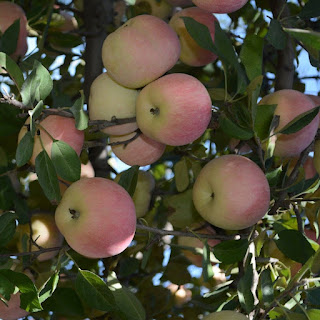Common Lantana
Common Lantana a Species of Shrub verbenas
Common Name.
Red sag
Yellow sag
West indian Lantana
Botanical Name
Lantana camara
Information
The common lantana is a flowering plant that grows best in tropical environments. It spread outside the Americas when the Dutch brought it to Europe. The plant is generally regarded as an unwanted weed that reduces biodiversity. Additionally, it is toxic to livestock and harms the output of farmland.
What animals are affected by the toxins of common lantana?
Common lantana contains triterpene acids, which cause a variety of negative effects on animals. All parts of the plant are toxic.
Is the common lantana poisonous?
Common lantana (Lantana camara) is a tropical flowering shrub native to Central and South America. Due to its popularity as an ornamental plant, it became naturalized throughout the Neotropics, with most spreading occurring during the 19th century. Today, it is present on all continents except Antarctica and is especially weedy in Australia, India, and South Africa, where it engulfs millions of hectares. The seeds are dispersed by birds.
Common lantana prefers disturbed land such as wastelands, rainforest edges, railways, and roads. It cannot penetrate natural forests unless they are damaged by logging or fires, so its spread goes hand-in-hand with these activities.
Attract Birds
Common lantana boast a wide variety of vibrantly colored flowers that attract many pollinators. They create long, thin plumes that burst with oranges, pinks, yellows, and reds. That's ideal for hummingbirds and many different butterfly species which can spot these colors from far away. Once there, they hover, dipping their beaks into the narrow path that leads to rich nectar. Some common lantana produce fruits, seeds, and leaves that are toxic to most wildlife. However, some local birds do eat the berries when other food options aren't available.
Name Story
Common lantana
This plant is often called common lantana, in which lantana is a Latin name for the wayfaring tree, Viburnum lantana, because they both have similar-looking flowers.
Interesting Facts
The branches, leaves and flowers of Lantana can volatilize odor that is very sensitive for mosquitoes and flies but no harm to humans. That’s why it has a strong effect of repelling mosquitoes and flies. Moreover, it has brilliant and changeable color. It has the reputation of " seven-changeable mosquitoes repellent”. So it has the dual functions of expelling mosquitoes and beautifying courtyards.
Symbolism
rigor, nobility
National Flower
Myanmar
Characteristics
Plant Type
Shrub
Lifespan
Perennial, Annual
Bloom Time
Summer, Fall
Plant Height
3 to 7 feet
Spread
6 feet
Flower Size
Inflorescence 0.6 inch to 1 inch
Habitat
Plantation, pastures
Flower Color
YellowRedOrangePinkWhitePurpleLavenderGold
Leaf Color
Green
Fruit Color
PurpleGreenBlackBlueLavender
Stem Color
GreenRedYellow
Tips from Garden Coaches
A vibrant and colorful plant that produces numerous flowers throughout a long season, the common lantana may look stunning in a garden border or hedge, but it can also become invasive.
Conditions Requirement
Difficulty Rating
Common lantana is super easy to take care of, with resistance to almost all pests and diseases. It is a perfect option for gardeners with brown thumbs.
Sunlight
Full sun, Partial sun
Hardiness
30 ℉
Hardiness Zones
10 to 13
Soil
Sand, Loam, Clay, Chalky, Acidic, Neutral, Alkaline
Care Guide
Water
The common lantana should be watered regularly, but avoid overwatering. This species should be planted in a well-drained pot because its blooms and roots are susceptible to overwatering. The common lantana should be watered after the top two inches of potting soil are allowed to dry.
Fertilization
Fertilization once in spring.
Pruning
Deadhead (or remove) withered flowers after flowering.
Planting Time
Late spring, Summer, Fall
Harvest Time
All year around
Propagation
Cutting, Division, Sowing
Pests and Diseases
Powdery mildew; glasshouse whitefly, glasshouse red spider mite
Scientific classification
Genus
Lantana - Shrub verbenas
Family
Verbenaceae - Verbena, Vervain
Order
Lamiales - Mints plantains olives and allies
Class
Magnoliopsida - Dicotyledons, Dicots, Eudicots
Phylum
Tracheophyta - Vascular plants, Seed plants, Ferns, Tracheophytes
Plant Distribution
Common lantana is native to Central and South America but invasive in the United States. This shrub thrives in a wide variety of habitats, including wastelands, rainforest edges, beachfronts, and open, unshaded regions of forests. It forms dense thickets and suppress native vegetation. These thickets create a dense understory in forests, turning them into shrubland. Common lantana has also been known to hybridize with similar native shrubs, further reducing these native species' numbers. Common lantana is a successful invader due to its high tolerance for a variety of habitats and climates and the successful dispersal of its seeds by birds.
Uses
Environmental Protection Value
Effects of soil consolidation, water conservation, soil improvement, fertility improvement and ecological environment improvement are obvious.
Economic Value
In industry, roots of the common lantana can be made into rubber, and the stems are raw materials for papermaking. Adding tobacco to the leaves can increase aroma or replace sandpaper for polishing.
Garden Use
Common lantana is planted along streets and in gardens for attractive borders, and can be used as a hedge. It is very popular in flower gardens for its bright, showy blooms and quick, aggressive growth. Growers also appreciate it for its hardiness against insects. This plant pairs well with citrus trees, succulents, and rock rose shrubs.




Comments
Post a Comment